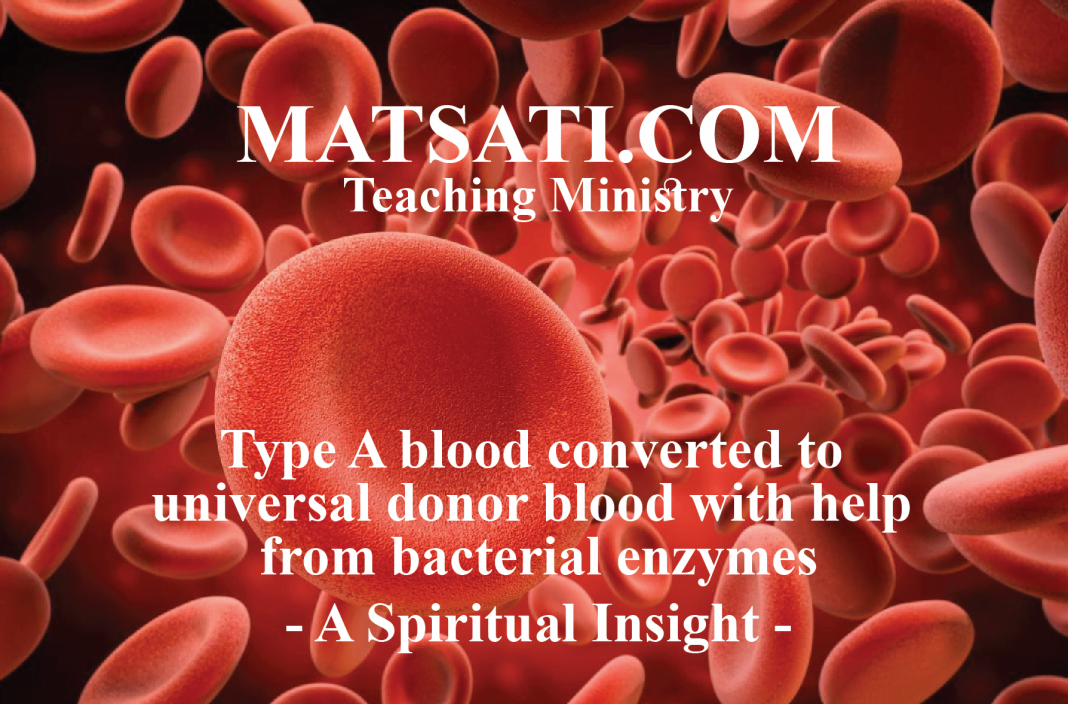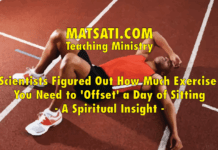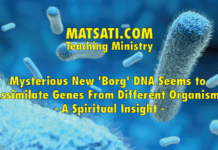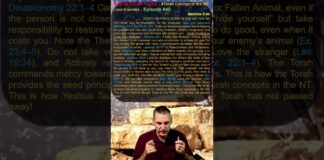Blood types are determined by the presence or absence of certain antigens. An antigen is a substance that can trigger an immune response if they are foreign to the body. In the case of blood types, the antigens in a person’s blood can trigger an immune response such that the immune system attacks the transfused blood. If a person had received a blood transfusion and received the wrong type of blood, this could be a serious life threatening problem. This is why safe blood transfusions depend on careful blood typing and cross-matching. Do you know what blood type is safe for you if you need a transfusion? There are four major blood groups determined by the presence or absence of two antigens known as A and B, which is attached to the surface of red blood cells. In addition to the A and B antigens, there is a protein called the Rh factor, which can be either present (+) or absent (–). These factors are what lead to the classification of the 8 most common blood types (A+, A-, B+, B-, O+, O-, AB+, AB-). Statistically, every year 4.5 million lives are saved by blood transfusions and every 2 seconds someone in the USA needs a blood transfusion. There are some rules to matching blood types for transfusions.
- Rh-negative blood is given to Rh-negative patients, and Rh-positive or Rh-negative blood may be given to Rh-positive patients.
- The universal red blood cell donor has Type O negative blood.
- The universal plasma donor has Type AB blood.
There are more than 600 other known antigens. The presence or absence of these antigens are what create the rare blood types. Certain blood types are also unique to ethnic groups, such as in the case of sickle cell disease which are of African American descent. The type O blood is routinely in short supply and in high demand because it is a universal donor. For example, O- blood is the universal blood type needed for emergency transfusions. Approximately 45 percent of caucasions are type O (+/-) and 51% African-Americans, and 57% of Hispanics are type O. Only 7% of the population is O- and so this is of the highest demand because it is used most often during emergencies. O+ is also in high demand because it is the most frequently occurring blood type consistent of 37% of the population.
Recently, researchers have discovered an enzymatic pathway in the human gut microbiome that converts A-type red blood cells to the universal O-type blood. [1] The antigens A and B are sugar antigens, and the enzymes are capable of removing these type of sugar antigens. The way this works, the enzyme identified is an enzyme pair from the obligate anaerobe Flavonifractor plautii that work in concert to efficiently convert the A antigen to the H antigen of O-type blood, via a galactosamine intermediate. Initial research led to limited success as the known enzymes that strip the red blood cells of the offending sugars did not work efficiently enough. Researchers spent 4 years improving the enzymes and then decided to look for a better enzyme among the human gut bacteria. The microbes they looked at are those that attach themselves onto the intestinal wall where they eat the sugar-protein combos called mucins that line the wall. The Mucin sugars are similar to the type-defining sugars on the red blood cells. The researchers collected a human stool sample, isolated the DNA, and then loaded the DNA into commonly used lab bacterium Escherichia coli. When they tested the enzymes together, the sugars come right off the red blood cells. More work is needed to ensure that all of the sugars are removed from all of the red blood cells. This is a matter of efficiency of this enzymatic process. This was the problem in previous efforts, the conversion efficiency was too low. These researchers also need to determine whether anything else was modified during the enzymatic consumption of sugars to ensure no damage was made to the red blood cells themselves and so a lot of work is yet to be accomplished. Researchers are however focusing upon converting type A to type O which would broaden the supply of blood and eliminate shortages around the world.
References
- Rahfeld, P.; Sim, L.; Moon, H.; Constantinescu, I.; Morgan-Lang, C.; Hallam, S. J.; Kizhakkedathu, J. N.; Withers, S. G., An enzymatic pathway in the human gut microbiome that converts A to universal O type blood. Nature Microbiology 2019.
The Spiritual insight may be taken from the idea of one type of blood being converted into another type of blood. This idea of transformation leads to a discussion on anger and how anger has the capacity to transform a person from one type into another with devastating consequences! The consequences are so significant, it carries with it the danger of Hell! The discussion opens with the Torah in the beginning, the creation account according to Bereshit / Genesis 1:6-9:
Bereshit / Genesis 1:6-9
1:6 Then God said, ‘Let there be an expanse in the midst of the waters, and let it separate the waters from the waters.’ 1:7 God made the expanse, and separated the waters which were below the expanse from the waters which were above the expanse; and it was so. 1:8 God called the expanse heaven. And there was evening and there was morning, a second day. 1:9 Then God said, ‘Let the waters below the heavens be gathered into one place, and let the dry land appear’; and it was so. (NASB, ו וַיֹּאמֶר אֱלֹהִים יְהִי רָקִיעַ בְּתוֹךְ הַמָּיִם וִיהִי מַבְדִּיל בֵּין מַיִם לָמָיִם: ז וַיַּעַשֹ אֱלֹהִים אֶת-הָרָקִיעַ וַיַּבְדֵּל בֵּין הַמַּיִם אֲשֶׁר מִתַּחַת לָרָקִיעַ וּבֵין הַמַּיִם אֲשֶׁר מֵעַל לָרָקִיעַ וַיְהִי-כֵן: ח וַיִּקְרָא אֱלֹהִים לָרָקִיעַ שָׁמָיִם וַיְהִי-עֶרֶב וַיְהִי-בֹקֶר יוֹם שֵׁנִי: פ ט וַיֹּאמֶר אֱלֹהִים יִקָּווּ הַמַּיִם מִתַּחַת הַשָּׁמַיִם אֶל-מָקוֹם אֶחָד וְתֵרָאֶה הַיַּבָּשָׁה וַיְהִי-כֵן:)
Using the language of metaphor, the Zohar Bereshit A.6, pp. 179-192, looks at this biblical text and states that there are three distinct spiritual energy forces that permeate all existence. These three forces are identified as the central pillars of the serfirot, the Right, the Left, and the Central Columns. The Zohar states that the Right correlates to the positive [+] which manifests as a proton. The Left signifies the negative [-] which is manifest as the electron. And the Central is expressed as the neutron which holds or bridges the positive and negative poles. This is metaphorically related to the firmament as the firmament separates that which is above from that which is below. This is described as corresponding to what takes place within our lives. The right side signifies the positive pole [+] which corresponds to the desire to share, and the left side represents the negative pole [-] corresponding to the desire to receive. The central pole [neutral] is our “free will” whereby we can choose to resist the desire to receive and nurture the desire to share. The concepts presented here in the Zohar describe these two sides (desires) and there is the need of an intermediary to guide these desires (the free will). The Zohar states in the second day of creation, a dispute broke out between the two sides of the firmament. The left side wanted to cancel the right, and the right side wanted to cancel the left. The right side is that which is the secret of chesed (grace) and the left is Geburah (severity). When this dispute broke out, when the left side was aroused with this dispute against the right side, the fire of anger between the two sides was fierce. Kabbalistically, it is said that from this dispute, from this fire of anger, Gehenom was created. Gehenom (Hell) was awakened and created by the left, and the left cleaved to it. This is interpreted as “whoever wants to strengthen the left shall fall into Gehenom which originates from the left.” This is a very interesting kabbalistic way of thinking about hatred, anger, and being set on fire by Hell. This is what James meant when he wrote in James 3:6 And the tongue is a fire, the very world of iniquity; the tongue is set among our members as that which defiles the entire body, and sets on fire the course of our life, and is set on fire by hell. (NASB) His comment that the tongue is “the very world of iniquity” may be an allusion to the upper worlds in the sefirot and the left/right as they are being described in the Zohar. Yeshua also said in Matthew 5:22 But I say to you that everyone who is angry with his brother shall be guilty before the court; and whoever says to his brother, ‘You good-for-nothing,’ shall be guilty before the supreme court; and whoever says, ‘You fool,’ shall be guilty enough to go into the fiery hell. (NASB) Yeshua speaks about the danger of pride that may be puffed up in Bina (knowledge) and Chokhmah (understanding) as pride pitts these two sides against one another leading to the danger of descending into the fire of hell. The Zohar states that an intermediary came along on the third day (Tiphareth, Beauty) and brought peace between the two sides ending the dispute between the left and the right. So Gehenom (Hell) removed itself from the left and descended below, the left joined the right and there was peace everywhere. It was because of the power of disagreement, of anger, that Gehenom clinged (cleaved) to the left. This leads us to the story from Parashat Korach (Bamidbar / Numbers 16:1-18:32) where Korach did not want to be attached above, to the structure of holiness that God had laid out according to the Torah. So like the left, he joined himself with anger and Gehenom cleaved to him. This is why we read what happened to Korach in the Torah, him and those who joined themselves with him went down to Sheol (the grave) descending into Gehenom (Hell). His anger was so strong, that he descended into Gehenom because Gehenom (hell) cleaved to him by his anger. The anger of hell attached itself to him. Because of anger, he was transformed by the fires of hell, just as James and Yeshua were stating in the Scriptures, of the dangers of hatred towards others, and pride, as opposed to loving others, even our enemies. Moshe, the intermediary of God, attempted to settle the dispute between Korach and the priesthood. Korach however had no respect for the glory of God (the Shekhinah) and refused to acknowledge the work of creation, meaning that he denied the central column, the firmament, the Messiah figure (Moshe) and his ability to make the choice to do what is right. He allowed his anger to drive him, to be unbalanced, leaning to the left (unrighteousness) as opposed to the right (righteousness, holiness, and truth).
The idea here from Bereshit / Genesis 1:6 “Let the firmament in the midst of the waters, and let it divide…” is described as the first dispute aroused by anger in which each wanted to overcome and annul his neighbor. Turn on the daily news today and we can’t help but notice how hate-filled the world is. One nation against another, one ethnic group hating another, one political group spouting hateful half-truths about another. And one person doing something hateful towards another fills the evening news today. One could easily get the impression that some people actually enjoy hating others. Yeshua taught how to diffuse this kind of hatred saying that we are to love one another, even our enemies (Matthew 5:43-48) and the Apostle John wrote that hatred is not a part of the life of a child of God (1 John 2:9-11, 4:20-5:4).
Matthew 5:43-48
5:43 ‘You have heard that it was said, ‘You shall love your neighbor and hate your enemy.’ 5:44 ‘But I say to you, love your enemies and pray for those who persecute you, 5:45 so that you may be sons of your Father who is in heaven; for He causes His sun to rise on the evil and the good, and sends rain on the righteous and the unrighteous. 5:46 ‘For if you love those who love you, what reward do you have? Do not even the tax collectors do the same? 5:47 ‘If you greet only your brothers, what more are you doing than others Do not even the Gentiles do the same? 5:48 ‘Therefore you are to be perfect, as your heavenly Father is perfect. (NASB)
1 John 2:9-11
2:9 The one who says he is in the Light and yet hates his brother is in the darkness until now. 2:10 The one who loves his brother abides in the Light and there is no cause for stumbling in him. 2:11 But the one who hates his brother is in the darkness and walks in the darkness, and does not know where he is going because the darkness has blinded his eyes. (NASB)
1 John 4:20-5:4
4:20 If someone says, ‘I love God,’ and hates his brother, he is a liar; for the one who does not love his brother whom he has seen, cannot love God whom he has not seen. 4:21 And this commandment we have from Him, that the one who loves God should love his brother also. 5:1 Whoever believes that Jesus is the Christ is born of God, and whoever loves the Father loves the child born of Him. 5:2 By this we know that we love the children of God, when we love God and observe His commandments. 5:3 For this is the love of God, that we keep His commandments; and His commandments are not burdensome. 5:4 For whatever is born of God overcomes the world; and this is the victory that has overcome the world our faith. (NASB)
Note how we are being told of the importance of keeping God’s commands. The Torah has not passed away but has great insight as a way of life! In the Messiah, we are able to go deeper into the spiritual implications of God’s eternal word as it is applied to our lives as we daily live for the glory of God. One such spiritual insight we receive from the Torah is in the Hebrew word we read over and over again, bamakom (בַּמָּקוֹם) meaning “in the place.” This is an act of God, of separation (Kadosh, holy), the Lord God choosing a place that is singled out as special for His purposes. (Note the parallel to the firmament and the Zohar.) This Hebrew word בַּמָּקוֹם generally is related to the place in which God is establishing His name as it is connected to the covenant! For example, the Masoretic Text writes that Jacob “he came to the place” vayifga bamakom (יִּפְגַּע בַּמָּקוֹם) indicating this was not just any random place. The sages ask the question why the Torah states bamakom, “the place,” rather than b’makom, “a place?” Moreover, the verb translated “he came” is yifga (יִּפְגַּע), means to encounter or to meet, suggesting that Jacob’s stop was a divine appointment. This place that was chosen, separated, singled out, was for the purpose of having a divine encounter with God. The Hebrew word makom (place) comes from the verb kum (קוּם), meaning “to rise up,” and as a result, in Jewish tradition the word ha-makom (המקום) became a Name for God. When we read the passages from Bereshit / Genesis 28:10-17, the sages interpreted these verses to mean that Jacob actually had his dream while in Jerusalem rather than in Bethel. The Talmud identifies “the place” (המקום) as Mount Moriah, the location of the Akedah (Issac and Abraham), based on the language used in Bereshit / Genesis 22:4, “On the third day, Abraham raised his eyes and saw the place (הַמָּקוֹם) in the distance” (Talmud Bavli Sanhedrin 95b and Chulin 91b). If that is the case, then Jacob’s dream of the ladder would have functioned as a revelation of the coming glory of the resurrected Messiah. This alludes to the Promised Seed whom Isaac foreshadowed and through whom all the families of the earth would be blessed (see Parashat Lech Lecha). As a result, there is a connection to bamakom (בַּמָּקוֹם), the place of separation, to the Messiah and having a divine encounter with God. It was Yeshua, the Angel of the LORD, who came to “descend” (as the Son of Man) and to “ascend / rise” (as the resurrected LORD) to be our mediator before God (see how Yeshua interprets these Scripture according to John 1:47-51). This is the point of the kabbalistic interpretation on the firmament causing a separation, a division between the left and the right, and the waters above from the waters below, heaven and Gehenom (Hell). This division, the firmament, which alludes to an intermediary, the Messiah, is the one who makes peace and prevents one from literally descending into hell! This setting apart as holy, the establishing of something being singled out for a specific use, the place where God establishes His name (בַּמָּקוֹם) the Zohar on Bereshit / Genesis 1:6-9, all lead to the conclusion of the necessity of the Messiah of God to lead His people. Interestingly enough, the Zohar interprets the intermediary came along on the third day (Tipharet, Beauty) and brought peace between the two sides (chesed / grace and geburah / severity) ending the dispute between the left and the right. Based upon Yeshua’s analogy in Matthew 5:22, the Messiah functions also to put down pride, making peace between Bina (the knowledge which puffs up) and Chokhmah (wisdom). This is the only way in which we can find true peace in our lives to overcome anger, hatred, and pride. Yeshua the Messiah on the third day raised from the grave, overcoming death, and by faith enters into our lives such that we may have peace from within, where both the left and the right, the desire to take, and the desire to give, are brought under His rule, and we live our lives according to His Word, for the glory of the Father in heaven! The Hebrew word for “intercessor” (mafgia, מַפְגִּיעַ) comes from the same verb (paga’) mentioned in Bereshit / Genesis 28:11. Yeshua is our Intercessor, our intermediary who makes “contact” with God on our behalf, just as Moshe did in the Torah. Through His sacrifice for our redemption upon the cross (the greater Akedah), Yeshua created a meeting place (vayifga bamakom,יִּפְגַּע בַּמָּקוֹם) so that we may have a divine encounter with God. Because of these things, we read the Hiphil verb of paga’ in Isaiah 53:6 which states, “…the Lord laid on him (hifgia bo, הִפְגִּיעַ בּוֹ) the iniquity of us all,” indicating that our sins were laid upon Yeshua as He made intercession for us (yafgia, יַפְגִּיעַ) in a very priestly and Torah centric way. (Isaiah 53:12). When we place our faith in Yeshua, the God of Israel touches each and every one of us and we are able to touch God. And we are told according to the Scriptures how today, our resurrected LORD “ever lives to make intercession (paga’) for us” (Hebrews 7:25, אשר על כן יוכל גם להושיע בכל וכל את הנגשים על ידו לאלהים כי חי הוא תמיד להפגיע בעדם׃). We don’t have to allow anger to control us in our lives. We have victory over this in Yeshua the Messiah of God! This is a Torah based perspective!









